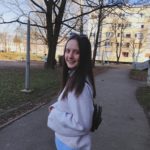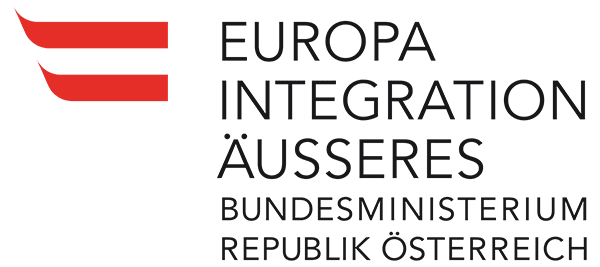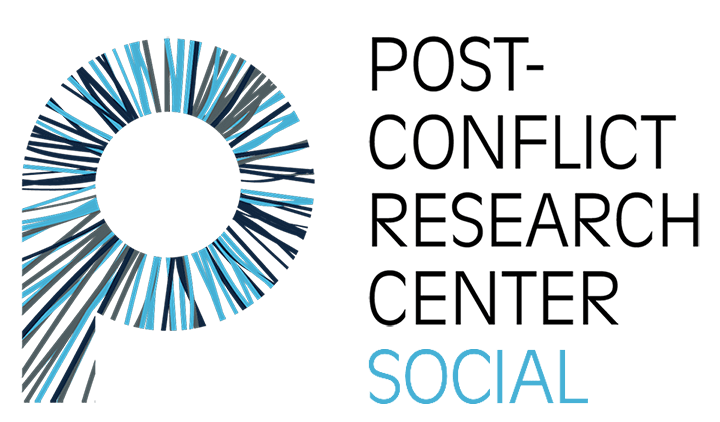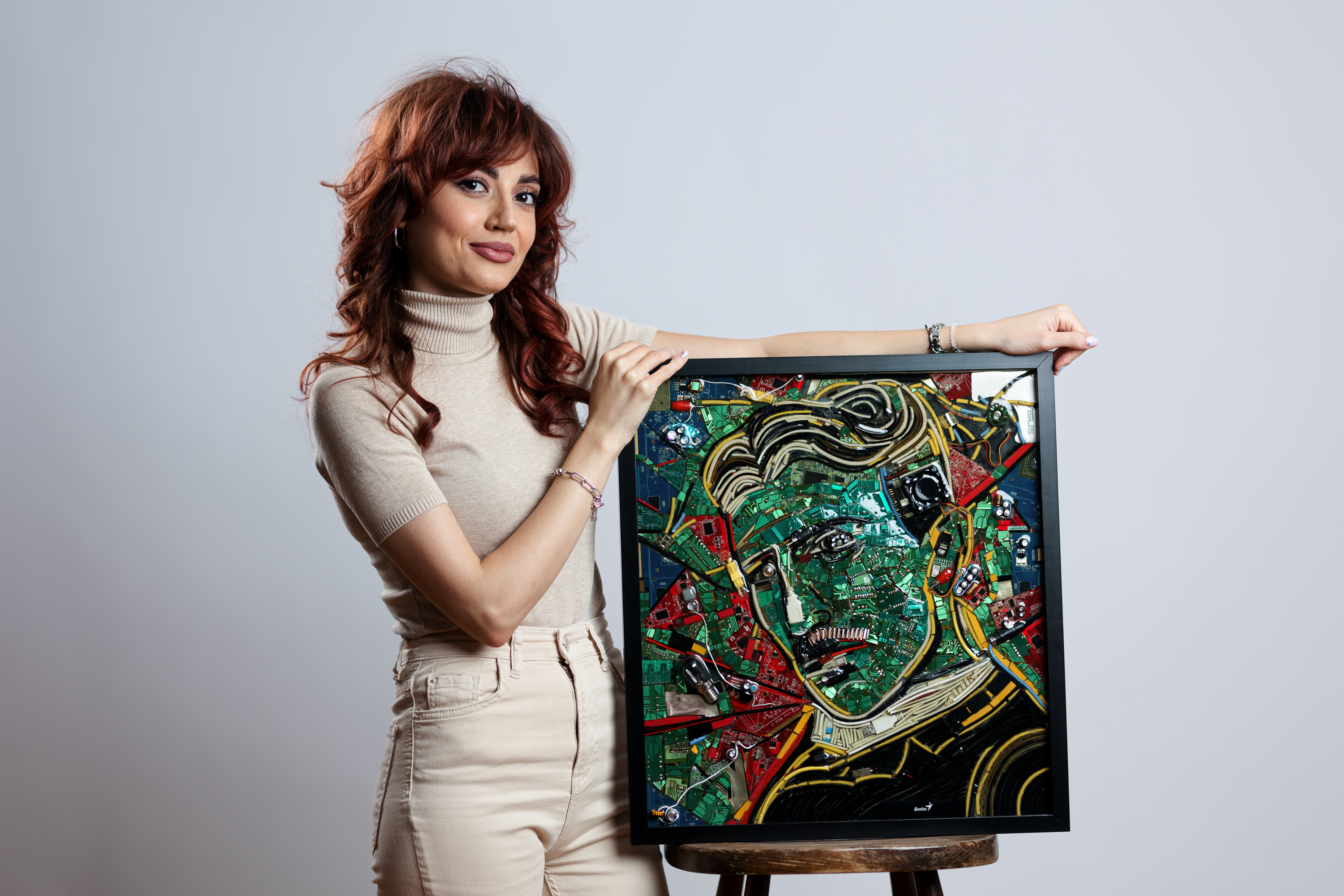
Danica Maksimović is a thirty-two-year-old artist born in Kosovska Gračanica, Kosovo, but she has lived and worked in Niš, Serbia for the past 16 years. There, she completed her secondary art school and Faculty of Arts, majoring in Painting. Her passion for creation has been with her since childhood, complemented by her interest in environmental protection.
Maksimović uses electronic waste as the primary material for creating mosaics. Her works exude aesthetics and convey powerful messages about environmental protection. As a pioneer of this technique, Maksimović has developed a unique approach to art that combines recycling with art, while encouraging her audience to think about sustainability and responsibility towards nature. Her works represent an innovative way of transforming old and discarded materials into something new, contributing to the global movement for preserving our planet.
It all began in 2021 when she was looking to recycle old motherboards and computer power supplies. Unable to find a suitable site for this, she started thinking about ways to transform creatively and ecologically utilize the material. It was then that the idea to work on a series of mosaics made from electronic waste was born.
Maksimović explains that she uses only electronic waste and computer components, and that the process of creation is extremely complex, requiring a lot of time and technical precision.
“I use and find components that are prepared, shaped, and glued to the base. The base is eco OSB board made from recycled Tetra Paks. Then, the components are glued to the base with a plastic adhesive. The pieces I join are waste, and the final touch is with epoxy resin,” says Maksimović.
She points out that the epoxy resin is eco-friendly and creates a glassy appearance. This completes a piece of art known as an eco-portrait.
According to Maksimović, the entire process of creation and the technique she uses are in the spirit of ‘green art’.
“If you have my work on your wall, you are actually recycling through art and making a small contribution to our planet.”
The motifs in her artworks are often inspired by the life and work of Nikola Tesla, who left an indelible mark on humanity as an engineer, futurist, and inventor. “A few years ago, on Tesla’s birthday, I was reflecting on him and his contributions as a scientist, and I decided to depict him in my mosaics. After that, the idea developed – I first created his portrait and then focused on his inventions and life,” Maksimović recalls, adding that she has dedicated one series of works solely to Tesla, his life, and his inventions, and plans to hold an exhibition on this theme.
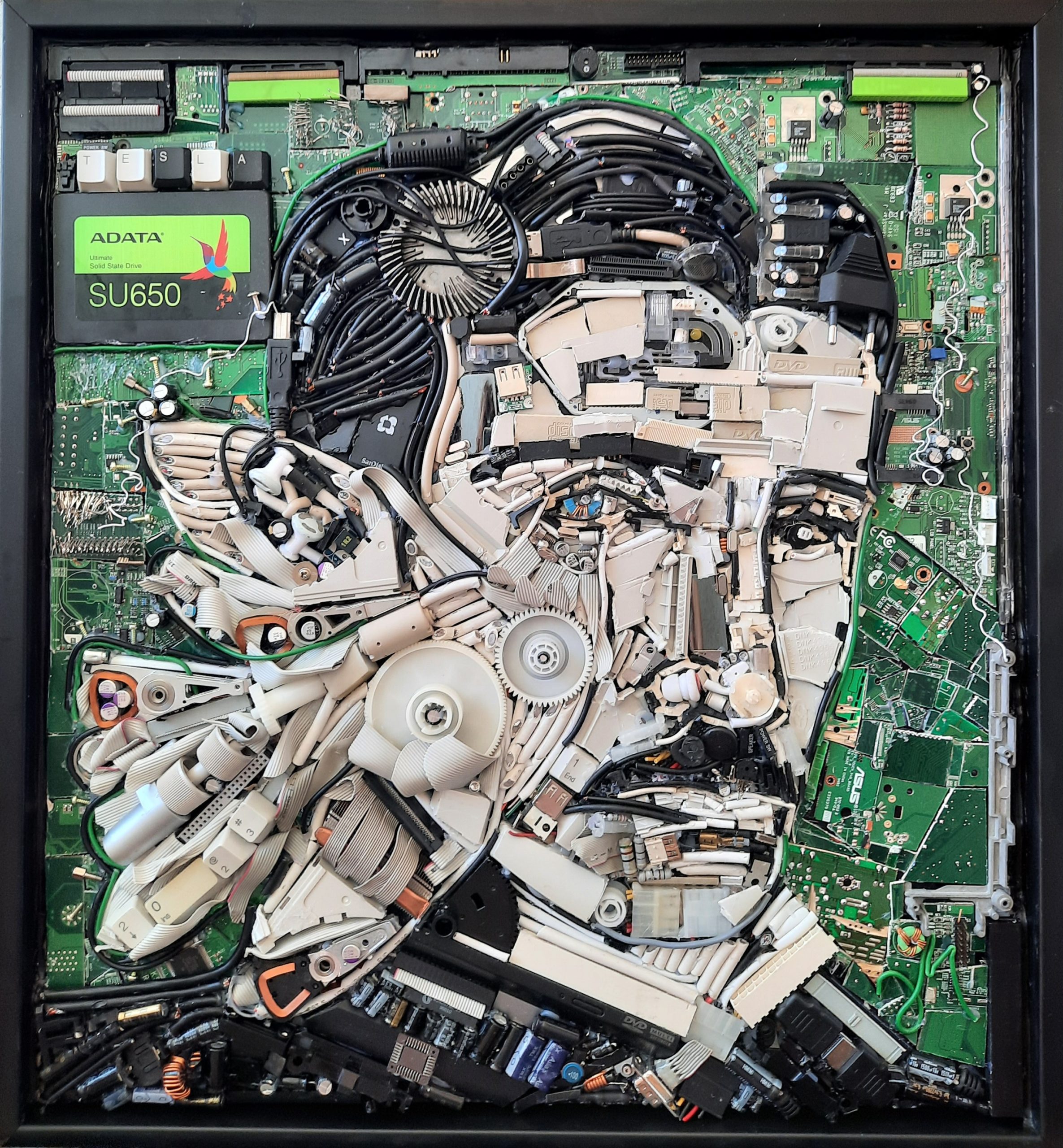
Additionally, urban landscapes of Serbia are a central part of her art, particularly landmarks from the cities of Niš and Belgrade. “Regarding Niš, the mosaics depict some of the most recognizable sites of the city, including Vila Naisu, Tri pesnice in Bubanj Park, Ćele Kula, and others. For Belgrade, the key symbols represented include Kalemegdan, the Temple of Saint Sava, the Belgrade Sparrow as a symbol of the city, and Zemun, which holds a special place in my mosaics,” Maksimović explains.
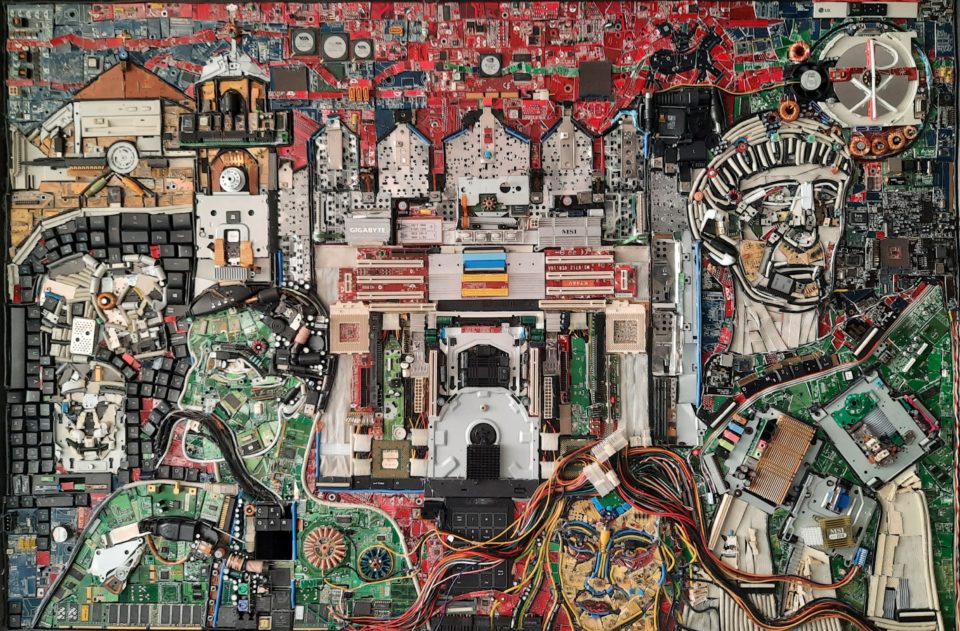
Maksimović has presented her artistic work in three solo exhibitions as well as thirty other exhibitions, both in Serbia and abroad, such as her exhibition at the Zemun Fest in 2022 in Belgrade. This year, Maksimović also received the Green Leaf award for her work in 2023, which is given to organizations or individuals who have made the most significant contributions to environmental protection. The award was presented as part of the Search for the Polluter of the Year and Environmental Protector campaign organized by Radio Belgrade 2 and the Vojvodina Green Movement.
Maksimović expressed her gratitude for the award and her honor at being alongside great individuals, noting that the same award was given to poet Ljubivoje Ršumović the previous year for his lifelong dedication to nature and ecological values.
Given the numerous ecological problems we face today, including climate change, water and air pollution, and the destruction of natural habitats, Maksimović highlights the importance of promoting ecological awareness and individual responsibility. In the 21st century, she believes that art should be environmentally engaged, and for that reason “I support every form of such art.”



